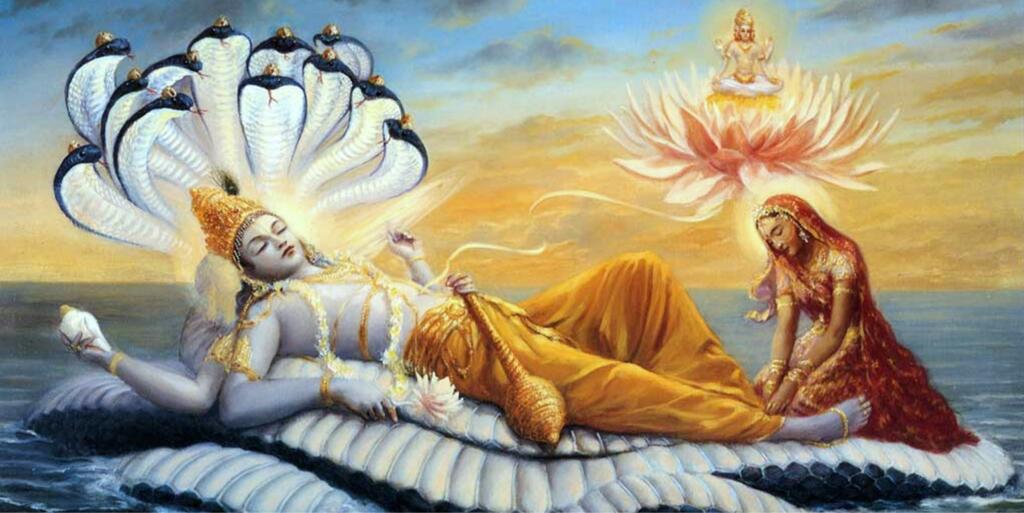Bhavishya Badri: The 50 feet tall temple with the top covered with gold gilt roof, situated along the Alaknanda River, Badrinath is one of the most revered pilgrimage sites for Hindus. It is also known as Badrikashram or Badri Vishal. It finds a place among the Char Dhams.
Badrinath is the abode of Lord Vishnu, one of the principle deities of Sanatan Dharm. There are many popular historical stories regarding the temple. Here are some of those interesting yet very important facts that need a glance.
Importance of Badrikashram and its restoration
Badrinath finds mention in the first chapter of second skanda of ‘Skanda Purana’.
The 57th shloka says, “The Ashram of lord Narayan was called ‘Muktipada’ in Satyuga, ‘Yogasiddha’ in Treta, ‘Vishal’ in Dwapar and ‘Badrikaashram’ in Kaliyug.”
According to Hindu texts, when Lord Vishnu sat in penance in the mountains, his consort, Goddess Lakshmi took the form of a badri tree (berry). She thought by becoming a tree, she could shield him from the harsh sun.
In Vaman Purana, sage Pulastya says that ‘Dharma’ the divine body, manifested from the heart of Lord Brahma and married to ‘Murti’, daughter of Daksh. She gave birth to 4 sons, 2 of them being Nar and Narayan. Nar and Narayan reached Badrinath and performed penance.
It is believed that this is the same place where Ved Vyas compiled the Vedas and wrote Purans assisted by Bhagwan Ganesh. In Dwapar, Pandavas along with Draupadi too visited here when they were on their ascent to heaven (Swargarohini yatra).
According to Hindu scriptures, Bhakt Narad got salvation in Badrinath and the sages like Gautam, Kashyap and Kapil, who was himself the incarnation of lord Vishnu performed penance here.
In the medieval times, Adi Shankaracharya, Ramanujacharya, Sri Madhvacharya and Sri Nityananda came here for learning and peaceful contemplation.
Undoubtedly, Badrinath is one of the ancient and most important pilgrimage sites for Hindus. However, it is not the only Vishnu temple in the region.
Also read: The timeless teachings of Sri Adishankaracharya
Bhavishya Badri
There are 5 temples of Lord Vishnu that are collectively called as ‘Panch Badri’ and the combined region is called as Badri Kshetra. The 5 Badri temples are Badrinath (Badri Vishal), Adi Badri, Yogadhyan Badri, Vridha Badri and Bhavishya Badari.
Bhavishya Badri is situated in Subhain village, 17 KM from Joshimath. It is considered as the future seat of Badrinath. It is located beyond Tapovan up the Dhauliganga river.
Over the course of history, most of the temples were lost and needed restoration. When Adi Shankaracharya visited the place and took out the Shaligram stone idol of Badri Vishal from the Tapt Kund, a celestial announcement was made. According to the prophecy, at the end of Kaliyuga, the Nar and Narayan mountains surrounding Badrinath will block the route. The access to the temple will be blocked and the idol of Lord Vishnu will manifest in Bhavishya Badri, as his new abode.
Lord Narsimha’s arm
According to another belief, there is a Narsimha temple in Joshimath. The deity Narsimha is the fourth avatar of Lord Vishnu and the idol of the deity carries a sword. The arm of the idol carrying sword is getting thinner year by year. It is believed that when the arm breaks down, the world will be destroyed. Later, a new world will be formed where the Bhavishya Badri will be worshipped.
Hindu scriptures are filled with a massive amount of knowledge and facts that finds relevance even in today’s world. In order to relive them, one should continuously explore the facts and travel to the places like these as it is crucial for Sanatan Dharm and the existence of Hindus.
Support TFI:
Support us to strengthen the ‘Right’ ideology of cultural nationalism by purchasing the best quality garments from TFI-STORE.COM
